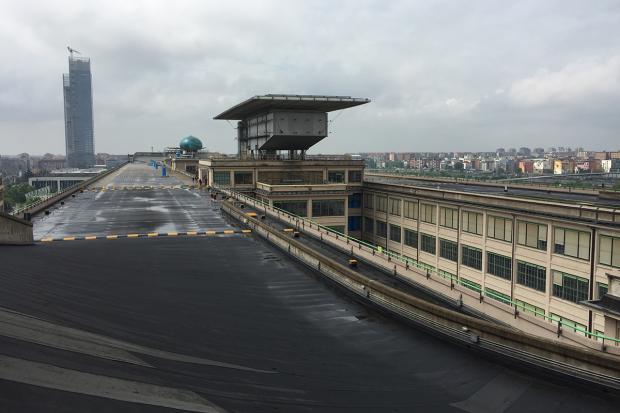Lancia, Fiat, the legendary Lingotto, and a crucible of Carrozzeria creativity that repeatedly shaped and reshaped post-war motoring aesthetics. Turin is up there with Detroit and Stuttgart for importance, probably even ahead of them both. In fact, the best bit of the Museo Nazionale dell’Automobile (allow at least a few hours, it’s brilliant) is a huge floor map listing all the motoring related businesses lining the river Po as it snakes through the urban landscape.

Do a bit of research and there are endless motoring landmarks to visit, but make sure that Lingotto is at the top of your list. Rather than being laid to rest, the rooftop track (the last stage of the ingenious production line) is being resuscitated and it is extremely visitor friendly. Much of the old factory may be a shopping centre or hotel, but you can even access the roof via an art gallery hosting a few bits and pieces of Giovanni and Marcella Agnelli’s overflow art collection. Nothing special, just a handful of Canellettos, works by the old masters, a bunch of stuff by Matisse and a couple of Picassos.

When you are done at Lingotto (if you are ever done), from there it is only a five minute walk to the museum. This, too, is absolutely stunning. A bit dark and dingy in places perhaps but, even without the grid of largely red racers (one of the finest exhibits in any museum anywhere in the world), the timeline through the history of motoring would be enthralling.

The factory and the museum and a few other landmarks would probably be enough, but then there is the other motoring matter that Turin is so famous for – The Italian Job. No car nut has to travel far through the city without stumbling across one of the locations from the classic caper movie. To make it easy for you, don’t miss Palazzo Madama, Galleria San Federico and Palazzo Carignano.

Obviously you’ve already muttered "Look for that bloody exit, we can't go round here all night” at Lingotto, but, when you exit the museum, cross the road and check out the river for more iconic scenes. Plus, another few minutes’ walk away is the Palavela arena – aka Vela or Mostre – where the Alfas chased the Minis on to the roof before stalling unconvincingly. With the Olympic rings on to mark its latter incarnation as an ice rink, the former exhibition centre can be found on the Via Ventimiglio.

Eventually, however, all of this wallowing in the romanticism of the Italian car industry made me realise that I was being a big, fat hypocrite. At the end of the day in motoring terms it is a city made famous for making cars and was the scene for a film that, truth be told, is barely known outside of the Commonwealth. So why is it so hard to imagine petrolheads in Rome (or anywhere else on the globe outside the UK) with a hankering for Triumphs or Alvises planning misty-eyed pilgrimages to Coventry? Or overseas visitors to the UK foregoing that trip to central London to instead go and get emotional over the remains of Longbridge and Halesowen, making sure they take the train so that they can pull in at the plant workers’ special railway stations.

But why shouldn’t they? However blasé we may be about them, perhaps we should all cherish our own motor cities a bit more. That’s why I am so pleased that events like Pride of Longbridge and the brilliant Coventry Motofest are proving such resounding successes (weather allowing!), but also why I think we need to create our own motoring maps and trails. It is time to celebrate what scraps are left of our motoring heyday even if so much of it is now office blocks or has been bulldozed.








